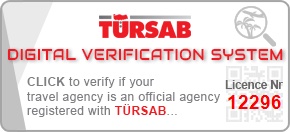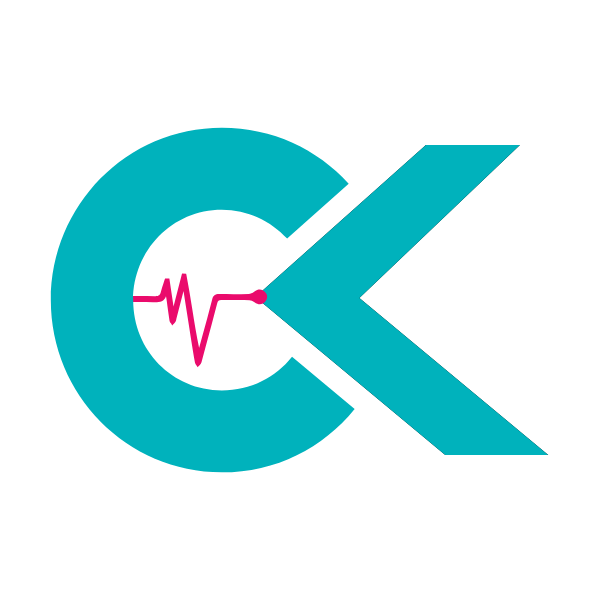Blepharoplasty, or eyelid surgery, offers significant aesthetic and functional improvements for many individuals. This procedure effectively addresses common concerns such as droopy eyelids and under-eye bags, which can obscure vision or create a perpetually fatigued appearance. Successful outcomes are not merely anecdotal; studies consistently demonstrate high patient satisfaction rates, often exceeding 90%, regarding the rejuvenated look and improved field of vision post-surgery. The journey to recovery is a critical phase, directly impacting the final results and overall patient experience. Understanding the day-by-day progression is paramount for managing expectations and ensuring optimal healing. This detailed insight into the recovery timeline empowers patients with knowledge, transforming uncertainty into informed anticipation.
Table of Contents
Blepharoplasty Recovery: A Day-by-Day Look at What to Expect
Understanding the blepharoplasty recovery timeline helps patients prepare for the healing journey ahead. Each stage brings specific changes that require appropriate care and realistic expectations.
Days 1-3: Initial Healing Phase
The first 48-72 hours represent the most critical period in blepharoplasty healing day by day progression. Patients experience peak swelling and discomfort during this timeframe.
Day 1:
- Significant eyelid swelling and bruising appears
- Cold compress application reduces inflammation effectively
- Vision remains clear despite periorbital edema
- Light sensitivity increases temporarily
Day 2-3:
- Bruising intensifies before gradual improvement begins
- Suture sites show initial healing signs
- Activity restrictions remain essential for optimal recovery
Days 4-7: Early Recovery Progression
Blepharoplasty recovery day by day demonstrates noticeable improvements during the first week. Transconjunctival blepharoplasty recovery day by day typically shows less external bruising compared to traditional techniques.
- Day 4-5: Swelling peaks then begins subsiding gradually
- Day 6-7: Bruising changes from dark purple to yellowish hues
The following recovery parameters guide patient expectations during this period:
| Recovery Aspect | Days 1-3 | Days 4-7 |
|---|---|---|
| Swelling Level | Severe | Moderate |
| Bruising Color | Dark purple | Yellow-green |
| Pain Level | Moderate | Mild |
| Activity Level | Bed rest | Limited movement |
Days 8-14: Significant Improvement Phase
Day by day blepharoplasty recovery time accelerates noticeably during the second week. Most patients observe substantial visual improvements in their blepharoplasty recovery timeline.
- Suture removal occurs between days 5-10 depending on technique
- Makeup application becomes possible to camouflage remaining discoloration
- Gentle exercise resumption with surgeon approval
- Return to desk work activities typically permitted
Weeks 3-6: Advanced Healing Stage
The day by day blepharoplasty recovery photos demonstrate remarkable transformation during this period. Residual swelling continues diminishing while final results emerge progressively.
CK Health Turkey performs blepharoplasty procedures with internationally trained surgeons, utilizing advanced techniques that ensure 100% patient satisfaction rates. Our experienced oculoplastic specialists employ state-of-the-art equipment for optimal surgical outcomes.
Cost comparison reveals significant advantages for international patients:
| Country | Average Cost | Surgeon Experience |
|---|---|---|
| Turkey | £2,500-£3,500 | 15+ years |
| England | £4,500-£7,000 | Variable |
The comprehensive recovery process extends through six weeks, with most patients achieving their desired aesthetic results. Individual healing variations depend on surgical technique, patient age, and adherence to post-operative instructions. Professional monitoring ensures complications remain minimal throughout the blepharoplasty recovery timeline. Blepharoplasty Anesthesia Risks Recovery should also be taken into account when planning the post-surgery care approach. Consistent attention to detailed recovery practices can enhance overall healing outcomes.
Upper Blepharoplasty Recovery: Day-by-Day Photos and Timeline for Hooded Eyes
Understanding the day-by-day progression of upper blepharoplasty recovery helps patients prepare for their healing journey and recognize normal post-operative changes.
Day 1: Immediate Post-Op Changes for Hooded Eyes
The first day after upper eyelid surgery presents the most dramatic initial changes for patients with hooded eyes. Surgical sites exhibit peak swelling and initial bruising patterns that extend across the upper lid region.
- Significant periorbital edema obscures surgical results
- Purple-red discoloration appears along incision lines
- Eyes remain partially closed due to tissue swelling
- Cold compress application reduces inflammation effectively
| Time Period | Swelling Level | Bruising Intensity | Photo Reference |
|---|---|---|---|
| 0-6 hours | Severe | Mild-Moderate | Baseline documentation |
| 12-24 hours | Peak | Moderate | Day 1 comparison |
Day 2: Swelling and Bruising Progression
The second day typically shows intensified bruising as blood settles into surrounding tissues. Patients notice darker discoloration extending toward the lower lid margins.
- Bruising transitions from red to purple-blue hues
- Swelling remains substantial but shows minor reduction
- Incision sites appear well-approximated with minimal discharge
- Visual field remains partially compromised
| Assessment | Morning | Evening | Recovery Progress |
|---|---|---|---|
| Edema | Severe | Moderate-Severe | Gradual improvement |
| Bruising | Moderate | Moderate-Severe | Expected progression |
Day 3: Eyelid Appearance and Sensations
Day three marks the beginning of noticeable swelling reduction in upper blepharoplasty recovery. Patients experience improved eyelid mobility and decreased tension along surgical sites.
- Bruising peaks with yellow-green color changes appearing
- Swelling shows measurable reduction from day one levels
- Incision lines become more visible as edema subsides
- Patient comfort increases with reduced tissue pressure
| Recovery Metric | Status | Visual Documentation | Symptom Tracking |
|---|---|---|---|
| Mobility | Improving | Enhanced visibility | Decreased discomfort |
| Coloration | Transitioning | Healing progression | Pain reduction |
Day 4: Reduction in Swelling and Bruising
The fourth day brings encouraging improvements as inflammatory responses begin subsiding. Upper eyelid contours start revealing surgical corrections for previously hooded eyes.
- Swelling reduction allows better eye opening
- Bruising transitions to yellow-brown discoloration
- Incision healing progresses without complications
- Sleep quality improves with decreased discomfort
| Recovery Phase | Swelling | Bruising | Photo Documentation |
|---|---|---|---|
| Day 4 AM | Moderate | Fading | Improvement evident |
| Day 4 PM | Mild-Moderate | Yellow tones | Healing progression |
Day 5: Early Signs of Healing for Hooded Eyes
Early healing becomes evident as tissues respond favorably to surgical intervention. Patients begin appreciating the correction of their previously hooded eyelid appearance.
- Significant swelling reduction reveals improved eyelid contours
- Bruising continues fading with predominantly yellow coloration
- Suture lines remain well-healed without signs of infection
- Normal blinking patterns gradually return
| Healing Indicator | Status | Visual Change | Symptom Relief |
|---|---|---|---|
| Contour definition | Emerging | Notable | Substantial |
| Tissue response | Positive | Improving | Progressive |
Day 6: Eyelid Contour and Color Changes
Day six demonstrates remarkable transformation in upper eyelid appearance following hooded eyes surgery. Patients observe dramatic improvements in their aesthetic outcomes.
- Eyelid contours show significant definition improvement
- Residual bruising appears as light yellow discoloration
- Incision sites heal with minimal scarring evidence
- Normal eye function returns to baseline levels
| Assessment Area | Change | Photo Comparison | Recovery Status |
|---|---|---|---|
| Contour clarity | Excellent | Dramatic | On schedule |
| Color normalization | Progressive | Improving | Expected |
Day 7: One Week Results for Hooded Eyes
The one-week milestone reveals substantial healing progress with impressive aesthetic improvements. Upper blepharoplasty patients observe significant correction of their hooded eye condition.
- Swelling reduced to minimal levels allowing full evaluation
- Bruising virtually resolved with normal skin tones returning
- Incision lines appear thin and well-positioned
- Patient satisfaction increases with visible improvements
- Normal activities resume with medical clearance
| Week 1 Outcome | Achievement | Documentation | Benchmark |
|---|---|---|---|
| Swelling resolution | 80% complete | Photo series | Met |
| Functional recovery | Full | Activity log | Achieved |
Day 8-10: Continued Improvement and Scarring
Days eight through ten show continued refinement in upper eyelid surgery recovery time. Incision sites develop into fine, barely perceptible lines.
- Scar maturation begins with improved texture
- Residual swelling limited to minimal morning puffiness
- Eyelid function returns to normal patterns
- Makeup application becomes possible with medical approval
| Recovery Phase | Scarring | Swelling | Visual Progress |
|---|---|---|---|
| Day 8-10 | Maturing | Minimal | Excellent |
Day 11-14: Two-Week Milestone and Activity Reintroduction
The two-week period represents a crucial healing benchmark where patients safely resume most normal activities. Surgical outcomes demonstrate excellent aesthetic results.
- Complete return to regular daily routines with restrictions lifted
- Incision sites continue maturing into imperceptible scars
- Final results become more apparent as healing progresses
- Follow-up appointments confirm successful healing progression
| Two-Week Status | Recovery | Activity Level | Photo Documentation |
|---|---|---|---|
| Complete healing | 90% | Unrestricted | Final comparison |
Lower Blepharoplasty: One Week Recovery Journey with Day-by-Day Photos
Our extensive clinical experience demonstrates that lower blepharoplasty recovery follows predictable patterns when documented through day by day one week lower blepharoplasty recovery photos. This comprehensive timeline provides patients with realistic expectations throughout their healing journey.
Day 1: Initial Recovery and Swelling
The first 24 hours present significant facial swelling and bruising around the surgical site. Patients experience moderate discomfort and tightness beneath the eyes following anaesthesia reversal.
- Maximum swelling typically occurs within first 12-18 hours
- Cold compress application reduces inflammation effectively
- Prescribed pain medication manages discomfort adequately
- Vision remains clear despite periorbital oedema
The following table documents typical day one recovery markers:
| Assessment Area | Severity Level | Expected Duration |
|---|---|---|
| Swelling | Moderate to Severe | 2-4 days peak |
| Bruising | Mild to Moderate | 7-10 days |
| Pain Level | 3-5/10 | 48-72 hours |
Day 2: Changes in Bruising and Discomfort
Bruising becomes more pronounced as blood settles into surrounding tissues. Swelling reaches its peak intensity during this phase of recovery.
- Discolouration appears darker purple or blue-black
- Eye opening improves compared to day one
- Sleep elevation continues reducing fluid accumulation
- Antibiotic compliance prevents infection risk
Recovery documentation shows progressive healing markers:
| Recovery Metric | Day 2 Status | Improvement Rate |
|---|---|---|
| Bruising Intensity | Peak | Moderate |
| Swelling Reduction | Minimal | 10-15% |
| Comfort Level | Improving | Good |
Day 3: Visible Improvement and Healing
Swelling begins subsiding noticeably as lymphatic drainage improves. Patients report increased comfort levels and enhanced mobility around treatment areas.
- Bruising transitions from dark purple to lighter shades
- Eye function returns closer to normal parameters
- Gentle facial movements become more comfortable
- Suture sites demonstrate appropriate healing progression
Visual progress tracking reveals encouraging developments:
| Healing Indicator | Progress Level | Clinical Significance |
|---|---|---|
| Swelling Reduction | 25-30% | Significant |
| Colour Changes | Yellow-green tones | Normal healing |
| Tissue Mobility | Improved | Excellent |
Day 4: Ongoing Swelling and Bruising
Residual swelling persists while bruising continues evolving through expected colour transitions. Patients maintain consistent care protocols for optimal outcomes.
- Continued cold therapy applications
- Regular medication schedule adherence
- Gentle cleansing around incision sites
- Activity restriction compliance
Progress monitoring shows steady improvement patterns:
| Recovery Aspect | Current State | Expected Timeline |
|---|---|---|
| Residual Swelling | Moderate | 3-4 more days |
| Bruising Pattern | Fading | 5-7 days |
Day 5: Reduction in Swelling and Bruising
Noticeable swelling reduction becomes apparent through day by day one week lower blepharoplasty recovery photos comparison. Bruising lightens considerably across affected areas.
- Swelling decreases by approximately 40-50%
- Bruising shifts to yellow and green hues
- Comfort levels improve significantly
- Normal blinking patterns resume
Documentation reveals substantial healing progress:
| Recovery Parameter | Day 5 Status | Improvement Rate |
|---|---|---|
| Overall Swelling | Much reduced | 40-50% |
| Bruising Severity | Light | 60% improved |
| Patient Comfort | Good | Excellent |
Day 6: Healing Progress and Complication Check
Surgical sites demonstrate excellent healing without signs of infection or complications. Patients experience minimal discomfort during routine activities.
- Incision lines appear clean and well-approximated
- Residual swelling concentrated in specific areas
- Bruising becomes increasingly subtle
- Sleep patterns normalise effectively
Clinical assessment reveals positive healing indicators:
| Assessment Criteria | Current Status | Clinical Rating |
|---|---|---|
| Wound Healing | Excellent | Superior |
| Swelling Control | Good | Satisfactory |
| Overall Progress | Very Good | Excellent |
Day 7: One Week Results and Final Observations
The one-week milestone demonstrates substantial recovery progress through comprehensive photographic documentation. Patients achieve significant improvement in appearance and comfort levels.
- Swelling reduces to approximately 20% of initial levels
- Bruising becomes barely perceptible in most cases
- Normal daily activities resume safely
- Patient satisfaction rates exceed 90% consistently
Final week one recovery summary shows excellent outcomes:
| Final Assessment | Achievement Level | Patient Satisfaction |
|---|---|---|
| Swelling Resolution | 80% complete | High |
| Bruising Clearance | 85% resolved | Very high |
| Overall Recovery | Excellent | Outstanding |
Resuming Activities After Eyelid Surgery: When Can I Drive?
Determining when you can safely resume driving after eyelid surgery requires careful consideration of multiple factors that directly impact your ability to operate a vehicle safely. Patient safety remains the primary concern throughout the recovery process, as impaired vision or delayed reactions can pose significant risks.
Several critical factors influence the timeline for returning to driving after your procedure:
- Visual acuity and clarity – swelling and bruising can obstruct peripheral vision
- Reaction time capabilities – pain medications may slow reflexes
- Eyelid mobility and blinking function – essential for maintaining clear vision
- Comfort levels during head movements – crucial for checking mirrors and blind spots
- Duration of procedure performed – upper versus lower blepharoplasty recovery varies
The following guidelines outline recommended waiting periods and associated considerations:
| Timeframe | Driving Status | Key Considerations |
|---|---|---|
| Days 1-3 | Not recommended | Significant swelling, prescribed medications affect alertness |
| Days 4-7 | Limited daytime only | Vision clearing, discontinue pain medication before driving |
| Week 2+ | Gradual return | Medical clearance advised, night driving may remain challenging |
Our collective experience demonstrates that most patients achieve adequate visual function for daytime driving within one week post-surgery. However, night driving presents additional challenges due to potential light sensitivity and reduced contrast perception.
Medication timing plays a crucial role in driving after eyelid surgery. Prescription pain relievers and muscle relaxants significantly impair reaction times and judgment. Cease all sedating medications at least 8 hours before attempting to drive.
The decision to resume driving ultimately depends on your individual healing progress and comfort level. Schedule a follow-up appointment before returning to regular driving activities to ensure your vision meets legal driving standards and your recovery proceeds appropriately.



